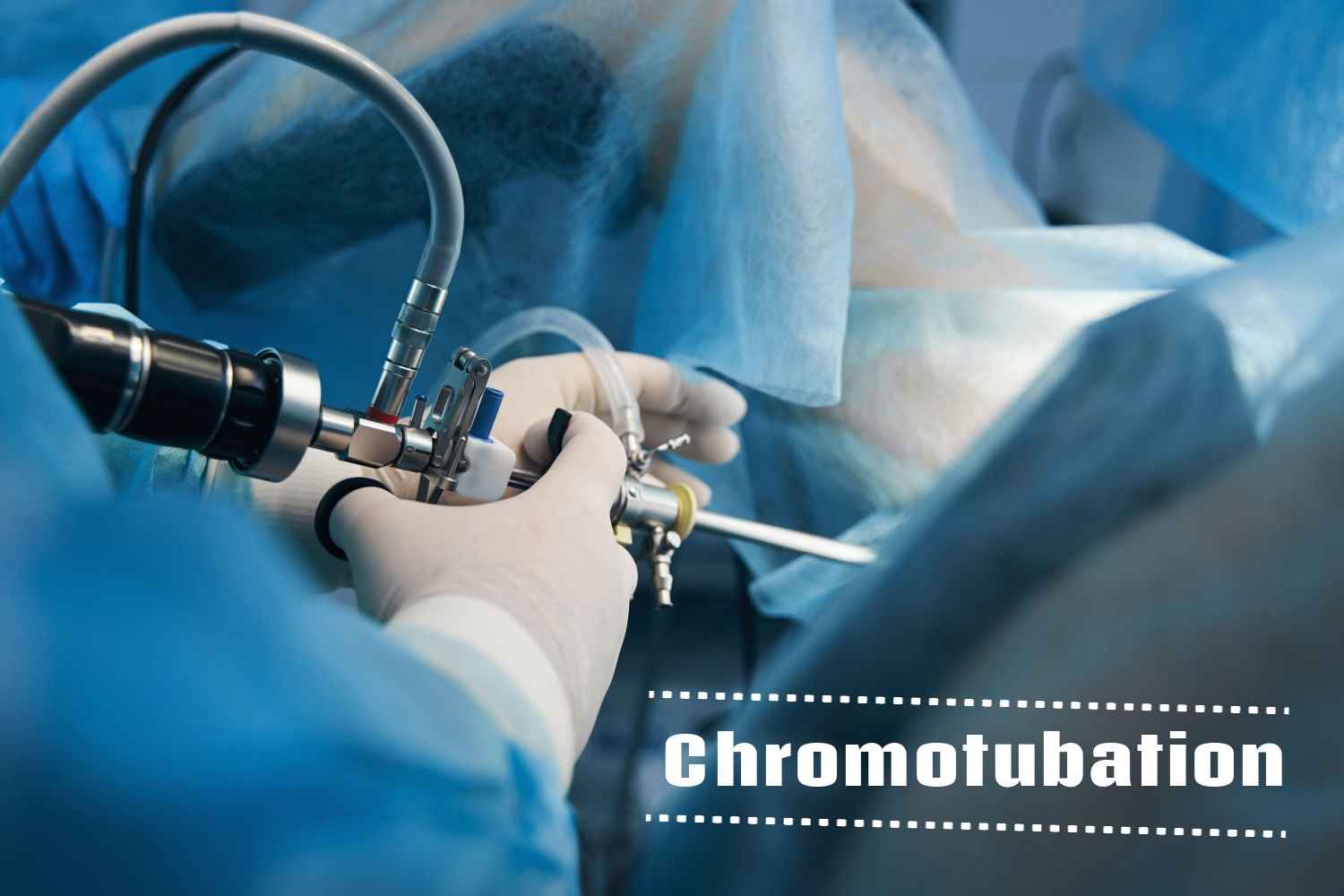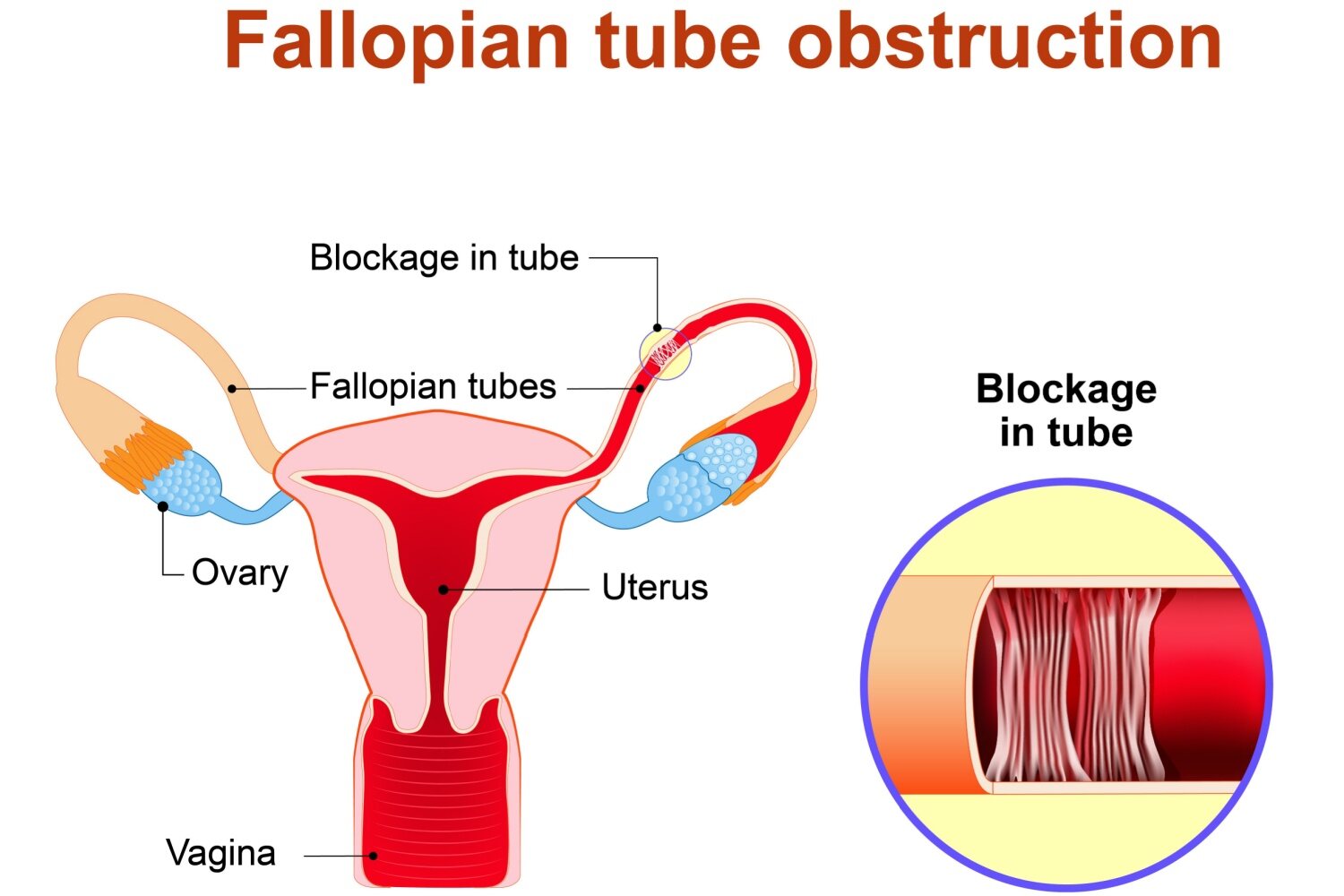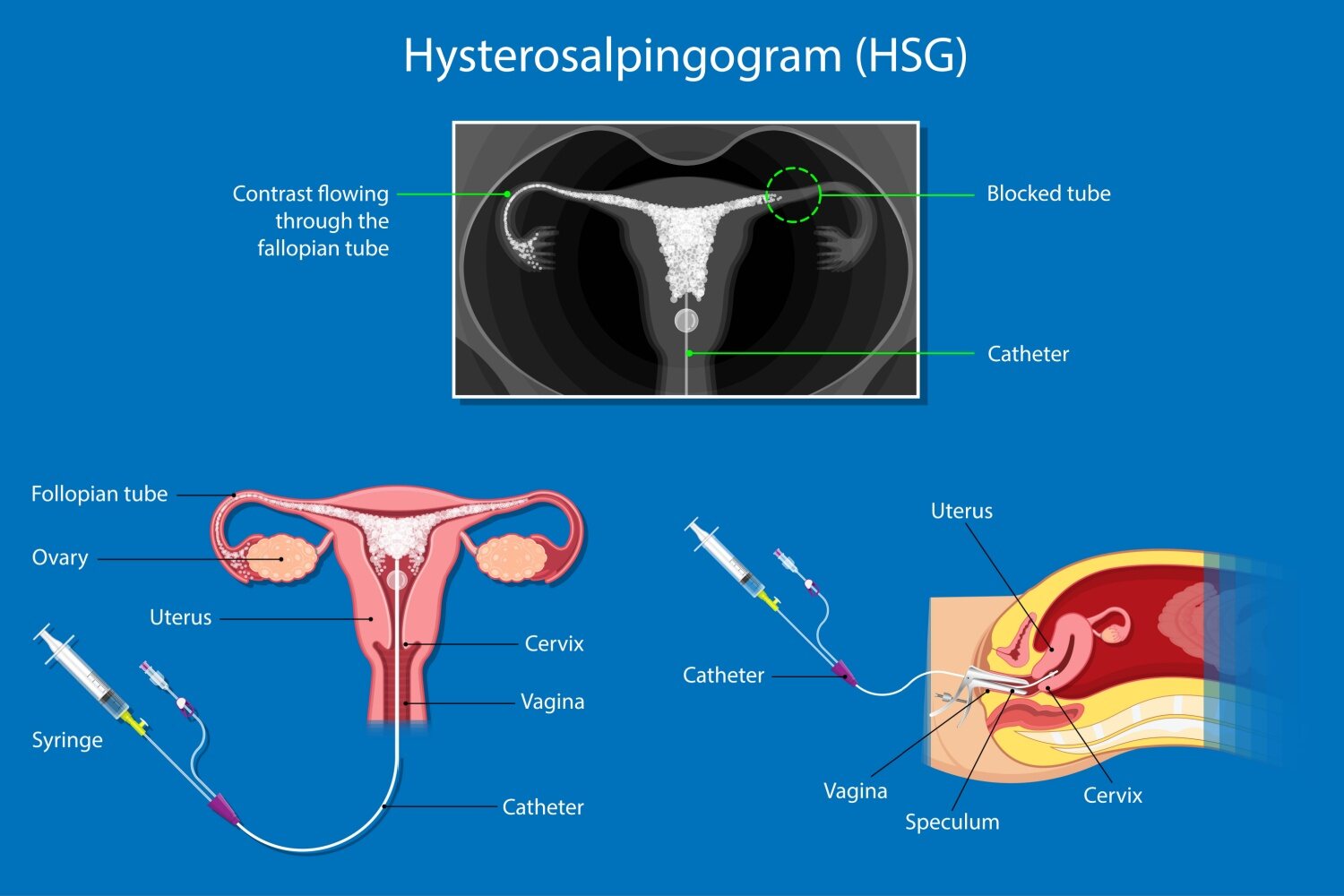
When women try to conceive but fail, infertility is the first word that hits the mind. Couples may start wondering if either of the partners has some medical issues that may be preventing them from having a baby. Well, infertility doesn’t always mean you are unable to conceive and have a tiny angel in your hands. Chromotubation is one process that helps couples struggling with infertility.
Sometimes, fertility issues arise due to certain medical conditions such as blockage in the fallopian tube, known as unexplained infertility. Certified doctors perform procedures such as chromotubation to evaluate infertility problems and provide you with the right approach to conceive naturally. Here is a quick read about chromotubation and how it helps in infertility evaluation and getting pregnant.
In This Article
- What Is Chromotubation?
- Why Is Chromotubation Done?
- What to Expect During Chromotubation?
- What Type of Risk Are Associated With Chromotubation?
- Additional Testing Options For Women With Blocked Fallopian Tubes
- What Type of Treatment Is Done To Help Women Get Pregnant?
- FAQ’s
What is Chromotubation?
Chromotubation is a minimally invasive surgical procedure. It is a part of laparoscopy that helps determine the infertility issues in a woman. Specifically, this method helps detect blocks in the fallopian tube which may be a prime reason for not getting pregnant naturally (1). The process involved administering general anesthesia to the patient, and passing a blue dye solution into the fallopian tube to find underlying causes of infertility issues.
Why Is Chromotubation Done?

The chromotubation procedure is a safe way to determine the reason for difficulties in achieving a natural pregnancy or infertility problems. Specifically, this method helps doctors in detecting blocks in the fallopian tube (2). The fallopian tube blockage may prevent eggs from passing from the ovary into the uterus. Furthermore, a blocked fallopian tube serves as a barrier for the sperm to reach the eggs, resulting in difficulty in pregnancy. In case both the fallopian tube blocks may occur causing infertility.
What to Expect During Chromotubation?
During the procedure, doctors will insert a surgical device equipped with a tiny diagnosing camera through a small incision made on the abdominal opening. During laparoscopy, a uterine manipulator and a camera device is inserted through the vagina and cervix into the uterus. A catheter is used to inject a dye inside the uterus, and the fallopian will be examined through a monitoring screen using a laparoscope camera.
If the dye spills out from the other end of the fallopian tube, it will indicate the absence of blockages. However, if the dye doesn’t come out from the other end, it may indicate a blockage inside the tube (3).
What Type of Risk Are Associated With Chromotubation?
Chromotubation is a safe and effective procedure to determine the reason for infertility, particularly in women. However, there are certain mild risks that this procedure carries, such as
- Minor blood loss
- Nerve damage
- Allergic reaction due to the anesthesia
- Blood clots
- Adhesions
Additional Testing Options For Women With Blocked Fallopian Tubes

Many women may not be comfortable with a surgical procedure to detect infertility. In such instances, fewer options are available to detect infertility reasons such as:
1. Hysterosalpingogram
This procedure includes a combination of chromotubation and X-ray. This procedure involves injecting the blue dye into the fallopian tube and taking X-rays. The X-ray reports will reveal blockages if any. There will be no blockage if the contract spills out of the tube (4).
2. Sonosalpingography
In a sonosalpingography, the uterus is filled with air bubbles. After that, a sonogram helps determine if the bubble emerges from the tube (5).
What Type of Treatment Is Done To Help Women Get Pregnant?

If doctors find a blockage inside the fallopian tube during the Chromotubation procedure, they will initiate a treatment surgical procedure to open the blockage and help women achieve pregnancy naturally.
a. Tube Resection
In this procedure, the surgeon will remove or try to correct the blockage during the laparoscopic procedure. Doctors may also follow endometriosis or adhesions to reopen the fallopian tube. The resecting procedure helps to remove the blockage, which further improves the chance of getting pregnant (6).
This does not, however, imply that fertility will result. The reason for blockages can frequently lead to irreparable damage in the tubes. Another possibility is that the obstruction is the consequence of pressure that the block has built up in the tube. In the long term, it might not always be effective even if the tubes are removed during surgery since scarring could reappear after recovery.
b. Fallopian Tube Removal
If the surgeon finds an internal damage to the fallopian tube, they may remove the fallopian tube completely. However, removal of the tubes doesn’t mean women can no longer be pregnant. In such instances, women can go for in-vitro fertilization to conceive. In in vitro fertilization, eggs from the donor female and sperm from the donor male are collected and fertilized under sterile laboratory conditions. The fertilized eggs are then implanted into the woman’s uterus for further fertilization.
Chromotubation is an accurate way to detect if the fallopian tube is blocked. Unlike other procedures, it allows surgeons to attempt resection of the fallopian tube during the same procedure to eradicate blockage so women can conceive and have a baby. However, this procedure is only performed as a part of laparoscopic surgery. Certain inherent risks are associated with it, such as blood loss, nerve damage, and others. Hence, it would be appropriate to consult with doctors and proceed with procedures to achieve a healthy pregnancy while combating infertility issues.
FAQ’s
1. Can I Get Pregnant After The Chromotubation Procedure?
Yes, you might be able to get pregnant after a laparoscopy procedure. However, it is advised to recover correctly after the procedure to attempt again for pregnancy.
2. Does Chromotubation Cause Pain?
There is a minimal chance of pain around the incision area or the abdomen. Commonly, patients experience discomfort around the neck and lower abdomen after the procedure. That is why it is advised to take complete rest after the procedure.
3. Is it Safe to go For Chromotubation?
Yes, it is completely safe to proceed with chromotubation to detect blockage in the fallopian tube. There will be a small incision made on the abdomen to insert the tiny camera and perform the procedure. In some cases, if the blockage is found, doctors may perform a resection of the fallopian tube to open the blockage.
References
- Fertility Improvement of Hysteroscopy with Chromopertubation in the Management of Infertile Women with Hysterosalpingography Evidence of Abnormal Tubal Patency: A Prospective Comparative Study – PMC – [https://www.ncbi.nlm.nih.gov/pmc/articles/PMC9675423/]
- Assessment of Tubal Patency with Selective Chromopertubation at Office Hysteroscopy versus Modified Minilaparoscopy in Infertile Women – PMC – [https://www.ncbi.nlm.nih.gov/pmc/articles/PMC8384029/]
- Chromopertubation – Presentation of a Modification of the Standard Technique | Anticancer Research –[https://ar.iiarjournals.org/content/33/4/1591]
- Hysterosalpingogram – StatPearls – NCBI Bookshelf – [https://www.ncbi.nlm.nih.gov/books/NBK572146/]
- SALINE SONOSALPINGOGRAPHY IN FEMALE INFERTILITY – Document – Gale OneFile: Health and Medicine – [https://go.gale.com/ps/i.do?id=GALE%7CA592339388&sid=googleScholar&v=2.1&it=r&linkaccess=abs&issn=22784748&p=HRCA&sw=w&userGroupName=anon%7Ee1b8d0d7&aty=open-web-entry]
- Salpingectomy | healthdirect – [https://www.healthdirect.gov.au/salpingectomy]

